The AMD Radeon R9 Fury X Review: Aiming For the Top
by Ryan Smith on July 2, 2015 11:15 AM ESTFiji’s Architecture: The Grandest of GCN 1.2
We’ll start off our in-depth look at the R9 Fury X with a look at the Fiji GPU underneath.
Like the Hawaii GPU before it, from a release standpoint Fiji is not really the pathfinder chip for its architecture, but rather it’s the largest version of it. Fiji itself is based on what we unofficially call Graphics Core Next 1.2 (aka GEN3), and ignoring HBM for the moment, Fiji incorporates a few smaller changes but otherwise remaining nearly identical to the previous GCN 1.2 chips. The pathfinder for GCN 1.2 in turn was Tonga, which was released back in September of 2014 as the Radeon R9 285.
So what does GCN 1.2 bring to the table over Hawaii and the other GCN 1.1 chips? Certainly the most well-known and marquee GCN 1.2 feature is AMD’s latest generation delta color compression technology. Tied in to Fiji’s ROPs, delta color compression augments AMD’s existing color compression capabilities with additional compression modes that are based around the patterns of pixels within a tile and the differences between them (i.e. the delta), increasing how frequently and by how much frame buffers (and RTs) can be compressed.
Frame buffer operations are among the most bandwidth intensive in a GPU – it’s a lot of pixels that need to be resolved and written to a buffer – so reducing the amount of memory bandwidth these operations draw on can significantly increase the effective memory bandwidth of a GPU. In AMD’s case, GCN 1.2’s delta color compression improvements are designed to deliver up to a 40% increase in memory bandwidth efficiency, with individual tiles being compressible at up to an 8:1 ratio. Overall, while the lossless nature of this compression means that the exact amount of compression taking place changes frame by frame, tile by tile, it is at the end of the day one of the most significant improvements to GCN 1.2. For Radeon R9 285 it allowed AMD to deliver similar memory performance on a 256-bit memory bus (33% smaller than R9 280’s), and for Fiji it goes hand-in-hand with HBM to give Fiji an immense amount of effective memory bandwidth to play with.
Moving on, AMD has also made some changes under the hood at the ALU/shader level for GCN 1.2. Many of these changes are primarily for AMD’s Carrizo APU, where task scheduling improvements go hand-in-hand with the AMD’s Heterogeneous System Architecture initiative and deliver improvements to allow the CPU and GPU to more easily deliver work to each other. Similarly, 16-bit instructions are intended to save on power consumption in mobile devices that use lower precision math for basic rendering.
More applicable to Fiji and its derivatives are the improvements to data-parallel processing. GCN 1.2 now has the ability for data to be shared between SIMD lanes in a limited fashion, beyond existing swizzling and other data organizations methods. This is one of those low-level tweaks I’m actually a bit surprised AMD even mentioned (though I’m glad they did) as it’s a little tweak that’s going to be very algorithm specific. For non-programmers there’s not much to see, but for programmers – particularly OpenCL programmers – this will enable newer, more efficient algorithms where when the nature of the work requires working with data in adjacent lanes.
But for gamers, perhaps the most significant architectural improvement to GCN 1.2 and thereby Fiji are the changes made to tessellation and geometry processing. There is no single silver bullet here – after going with a 4-wide geometry front-end in Hawaii, AMD hasn’t changed it for Tonga or Fiji – but AMD has put in quite a bit of effort in to improving how geometry data moves around within the chip and how it’s used, on the basis that at this point the limitations aren’t in raw geometry performance, but rather the difficulties in achieving that performance.
Much of this effort has been invested in better handling small geometry, whether it’s large quantities of small batches, or even small quantities of small batches. The inclusion of small instance caching, for example, allows the GPU to better keep small batches of draw calls in cache, allowing them to be referenced and/or reused in the future without having to go to off-cache memory. Similarly, AMD can now store certain cases of vertex inputs for the geometry shader in shared memory, which like small instance caching allows for processing to take place more frequently on-chip, improving performance and cutting down on DRAM traffic.
More specific to Fiji’s incarnation of GCN is how distribution is handled. Load balancing and distribution among the geometry frontends is improved overall, including some low-level optimizations to how primitives generated from tessellation are distributed. Generally speaking distribution is a means to improve performance by removing bottlenecks, however AMD is now catching a specific edge case where small amplification factors don’t generate a lot of primitives, and in those cases they’re now skipping distribution since the gains are minimal, and more likely than not the cost from the bus traffic is greater than the benefits of distribution.
Finally, AMD has also expanded the vertex reuse window on GCN 1.2. As in the general case of reuse windows, the vertex reuse window is a cache of sorts for vertex data, allowing old results to be held in waiting in case they are needed again (as is often the cases in graphics). Though they aren’t telling us just how large the window now is, GCN 1.2 now features a larger window, which increases the hit rate for vertex data and as a result further edges geometry performance up since that data no longer needs to be regenerated.
As with our R9 285 review, I took the time to quickly run TessMark across the x8/x16/x32/x64 tessellation factors just to see how tessellation and geometry performance scales on AMD’s cards as the tessellation factor increases. Keeping in mind that all of the parts here have a 4-wide geometry front-end, the R9 285, R9 290X, and R9 Fury X all have the same geometry throughput on paper, give or take 10% for clockspeeds. What we find is that Fury X shows significant performance improvements at all levels, beating not only the Hawaii based R9 290X, but even the Tonga based R9 285. Tessellation performance is consistently 33% ahead of the R9 290X, while against Tonga it’s anywhere between a 33% lead at high factors to a 130% lead at low tessellation factors, showing the influence of AMD’s changes to how tessellation is handled with low factors.


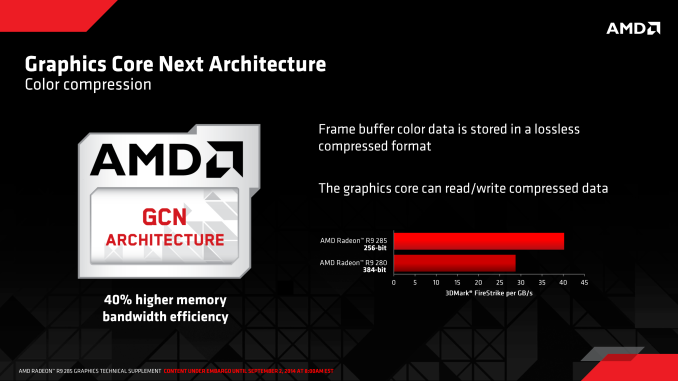
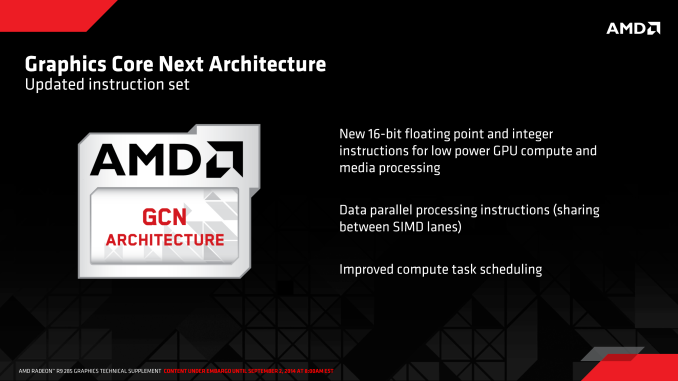
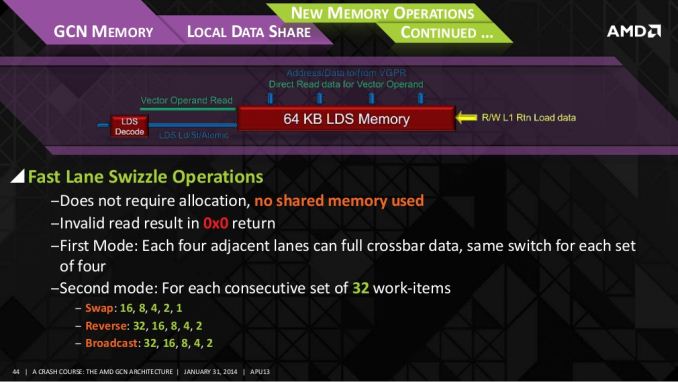
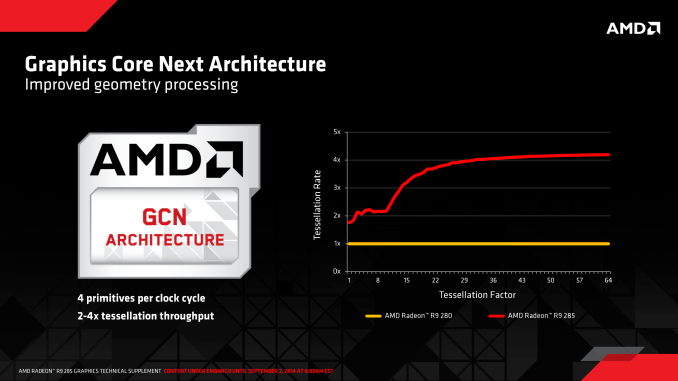
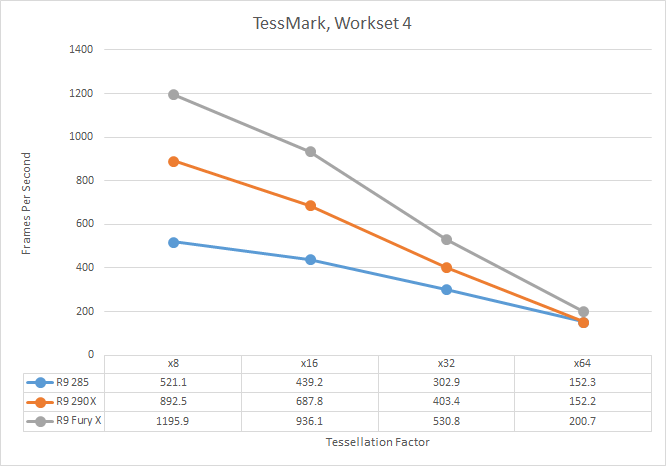








458 Comments
View All Comments
looncraz - Friday, July 3, 2015 - link
We don't yet know how the Fury X will overclock with unlocked voltages.SLI is almost just as unreliable as CF, ever peruse the forums? That, and quite often you can get profiles from the wild wired web well before the companies release their support - especially on AMD's side.
chizow - Friday, July 3, 2015 - link
@looncrazWe do know Fury X is an exceptionally poor overclocker at stock and already uses more power than the competition. Who's fault is it that we don't have proper overclocking capabilities when AMD was the one who publicly claimed this card was an "Overclocker's Dream?" Maybe they meant you could Overclock it, in your Dreams?
SLI is not as unreliable as CF, Nvidia actually offers timely updates on Day 1 and works with the developers to implement SLI support. In cases where there isn't a Day 1 profile, SLI has always provided more granular control over SLI profile bits vs. AMD's black box approach of a loadable binary, or wholesale game profile copies (which can break other things, like AA compatibility bits).
silverblue - Friday, July 3, 2015 - link
No, he did actually mention the 980Ti's excellent overclocking ability. Conversely, at no point did he mention Fury X's overclocking ability, presumably because there isn't any.Refuge - Friday, July 3, 2015 - link
He does mention it, and does say that it isn't really possible until they get modified bios with unlocked voltages.e36Jeff - Thursday, July 2, 2015 - link
first off, its 81W, not 120W(467-386). Second, unless you are running furmark as your screen saver, its pretty irrelevant. It merely serves to demonstrate the maximum amount of power the GPU is allowed to use(and given that the 980 Ti's is 1W less than in gaming, it indicates it is being artfically limited because it knows its running furmark).The important power number is the in game power usage, where the gap is 20W.
Ryan Smith - Thursday, July 2, 2015 - link
There is no "artificial" limiting on the GTX 980 Ti in FurMark. The card has a 250W limit, and it tends to hit it in both games and FurMark. Unlike the R9 Fury X, NVIDIA did not build in a bunch of thermal/electrical headroom in to the reference design.kn00tcn - Thursday, July 2, 2015 - link
because furmark is normal usage right!? hbm magically lowers the gpu core's power right!? wtf is wrong with younandnandnand - Thursday, July 2, 2015 - link
AMD's Fury X has failed. 980 Ti is simply better.In 2016 NVIDIA will ship GPUs with HBM version 2.0, which will have greater bandwidth and capacity than these HBM cards. AMD will be truly dead.
looncraz - Friday, July 3, 2015 - link
You do realize HBM was designed by AMD with Hynix, right? That is why AMD got first dibs.Want to see that kind of innovation again in the future? You best hope AMD sticks around, because they're the only ones innovating at all.
nVidia is like Apple, they're good at making pretty looking products and throwing the best of what others created into making it work well, then they throw their software into the mix and call it a premium product.
Intel hasn't innovated on the CPU front since the advent of the Pentium 4. Core * CPUs are derived from the Penitum M, which was derived from the Pentium Pro.
Kutark - Friday, July 3, 2015 - link
Man you are pegging the hipster meter BIG TIME. Get serious. "Intel hasn't innovated on the CPU front since the advent of the Pentium 4..." That has to be THE dumbest shit i've read in a long time.Say what you will about nvidia, but maxwell is a pristinely engineered chip.
While i agree with you that AMD sticking around is good, you can't be pissed at nvidia if they become a monopoly because AMD just can't resist buying tickets on the fail train...